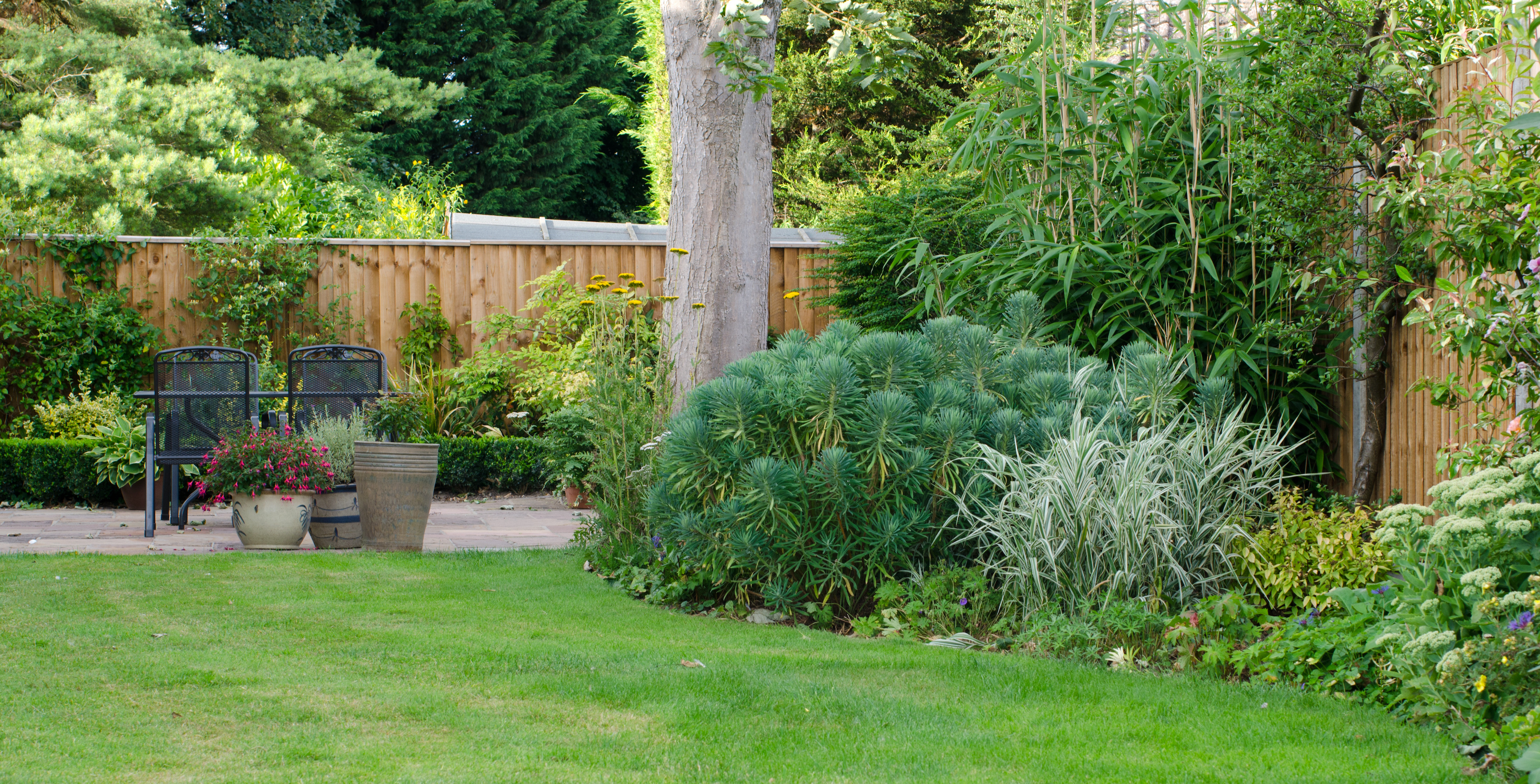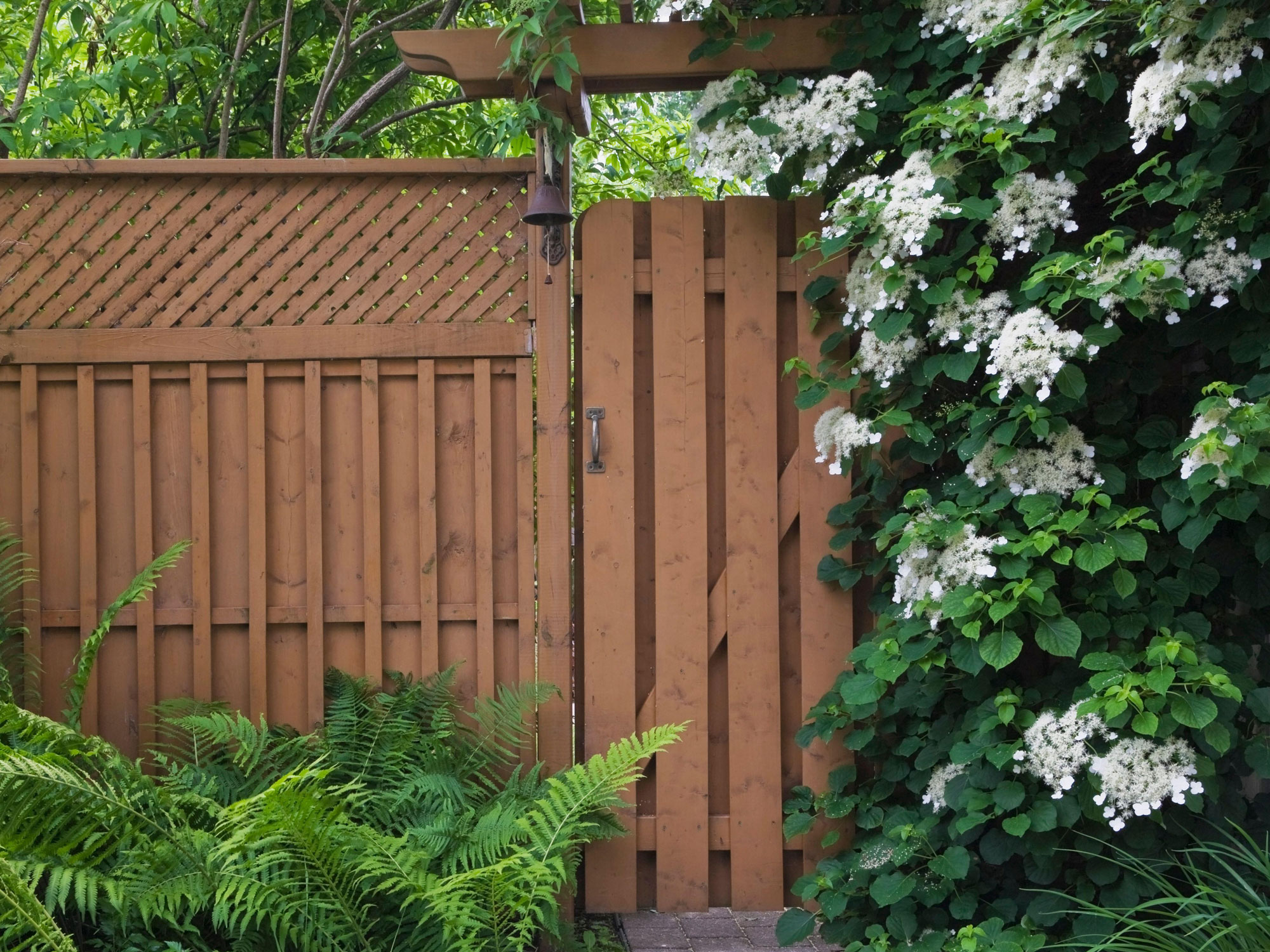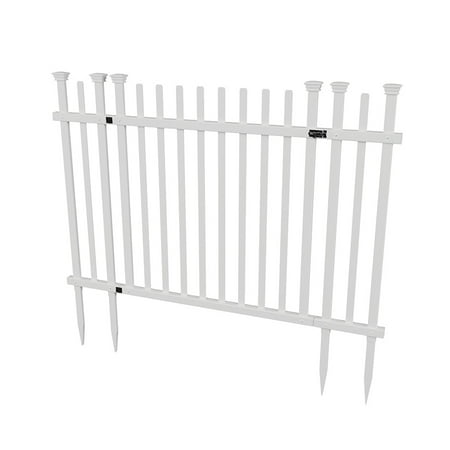How Much Does a New Backyard Fence Cost? From Budget to Blow-out, These Are Your Options
If you're wondering how much a new backyard fence will cost you, we've asked the experts for ballpark figures for all kinds of styles

How much does a new backyard fence cost? If your existing fence has seen better days, this question may be on your mind. And like most things in life, the answer is that the cost can vary considerably.
So first consider why you want the fence. Is it to keep kids and pets contained, as a privacy fence, or for security, or to create an attractive backdrop for your yard?
The size of the perimeter, the height of fencing you require, the type of material, the styles you like and whether you want professional installation, or are prepared to do the work yourself, will all impact the cost.
To simplify your decision, we've narrowed down some of the options from budget to blow out, so you can gauge what is best for you and your yard.
1. Budget-mid-range options

'According to our cost data, installing a fence costs an average of $23 per linear foot,' says Angie Hicks, co-founder of Angi, the home service and renovation site. 'However, the cost can range anywhere from $6 to $50 per linear foot, depending on the type of fence you choose.'
For attractive and secure garden fencing, timber is among the least expensive options. However there are many different types of wood fences.
It's worth remembering the phrase 'buy cheap, buy twice' when choosing timber fencing. Untreated pine may be more affordable but it's more likely to rot than pressure-treated wood or better quality timbers, such as cedar, cypress or redwood.
The Livingetc newsletters are your inside source for what’s shaping interiors now - and what’s next. Discover trend forecasts, smart style ideas, and curated shopping inspiration that brings design to life. Subscribe today and stay ahead of the curve.
Timber fences with horizontal panels offer a clean, modern look and are popular right now. If you're looking to be prudent with your budget and want privacy, consider a standard stockade fence. These have vertical slats with no gaps for maximum privacy and can be bought at box stores, such as Lowe's or Home Depot.
'The average cost to install a backyard fence is around $5,400,' says Gary McCoy, Lowe’s Store Manager. 'Wood tends to be a less expensive material compared to vinyl with pricing ranging at $8 to $12 per linear foot, while vinyl costs about $15 to $30 per linear foot.'
'Traditionally fences are installed and secured by digging holes and filling them in with cement. However, there are alternate methods, such as a no dig fence, that do not require a concrete base but will not be as sturdy as traditional concrete base fences.'
2. Installation vs DIY

A general rule of thumb with many home or garden projects is that you can often halve the cost by doing your own installation. However, if you consider your time more precious, or you don't have the skills, it is worth calling in the professionals.
The project type, along with supply and demand always affect labor costs, so installation prices can vary considerably from region to region.
Installers can be found on Angi with costs on average between $1,781-$4,579 in 2024, depending on the project size, type and location. However, large high-end projects can run up to $13,700.
'NYC pricing is a lot higher than anywhere else, due to the logistical challenges and the fact that everything has to be done by hand (i.e., no heavy machinery can be used for digging post holes or for carrying materials into backyard spaces) and business costs are high,' says Kat Aul Cervoni, landscape designer and founder of Staghorn NYC.
'On average, in NYC, a fully installed hardwood fence (ipe) at 6’ high is about $350 a linear foot, while a 6' cedar fence is probably more like $190 a linear foot.'
A retailer such as Lowe's can also connect you to independent installers. They suggest installation costs can range from $3270-$7790, depending on your project and location.
'Depending on the type of fence, it is best for a professional to install to help ensure it is installed properly and also follows any codes in your area,' says Gary McCoy. 'However, if homeowners opt to install their own fence, the no dig fence method is a great, DIY-friendly option.'
3. Potential additional costs
When installing a fence, it's often necessary to validate your property lines, or apply for a building permit, so check with your municipality first. Do also discuss your plans with any neighbors with adjacent properties, to avoid any backyard disputes.
'Most cities require permits for fence installation,' says Angie Hicks. 'While the cost varies depending on your location, budget an extra $20 to $60 for a fencing permit.
'If you need to remove your old fence before installing a new one, expect to pay between $3 and $5 per linear foot for removal.
'Installing a fence on a slope can be difficult and costly too. If your yard needs to be levelled, expect to pay between $1,000 and $3,200.
'Gates can also significantly increase the cost of installing a fence. The price of installing a gate varies greatly, so we recommend talking to your pro to get an estimate.'
4. No-dig picket fencing budget option

Traditional front yard picket fencing typifies the 'American Dream' but there are more modern versions too, if you prefer contemporary styles for your landscaping. The 'no-dig' fences are also the easiest to install around a lawn or flower beds, if you want to save money and do it yourself.
The fence posts between the panels are secured into the ground with metal spikes that are hammered into place. This method is much easier than securing posts with concrete. However, do a site survey first, to make sure there isn't too much stone below the surface, which would hamper or prevent your efforts.
Although more expensive to buy than regular timber or vinyl panels, you'll save on installation. Expect to pay around $85 for a 2-pack H36"xW42" no-dig vinyl fence at Walmart.
5. More expensive styles

'Some fencing materials are more expensive than others, leading to a higher overall project cost,' explains Angie Hicks, co-founder, Angi.
'Generally, wrought iron is the most expensive fencing material, costing between $25 and $55 per linear foot. Steel and aluminum fencing also come at a high price point of $17 to $90 per linear foot.
'In addition, some fencing materials are more difficult to install than others, which leads to higher labor costs. For example, heavy materials like wrought iron will generally cost more to install than lighter materials such as PVC.'
Jacky Parker is a freelance lifestyle journalist and writer, producing a wide range of features for magazines and digital platforms. She has written for Livingetc and its sister titles, Homes & Gardens and Country Homes & Interiors for more than 15 years, both as a freelance contributor and as Acting Digital Editor and Acting Style Content Editor, regularly reporting on the latest interiors, gardens and wellness inspiration, speaking to experts in their respective fields, and discovering the best tips.
Jacky has also written for other publications, including Sunday Times Style, The Telegraph, Architectural Digest, House Beautiful, ELLE Decoration, Red, Grand Designs and more.


